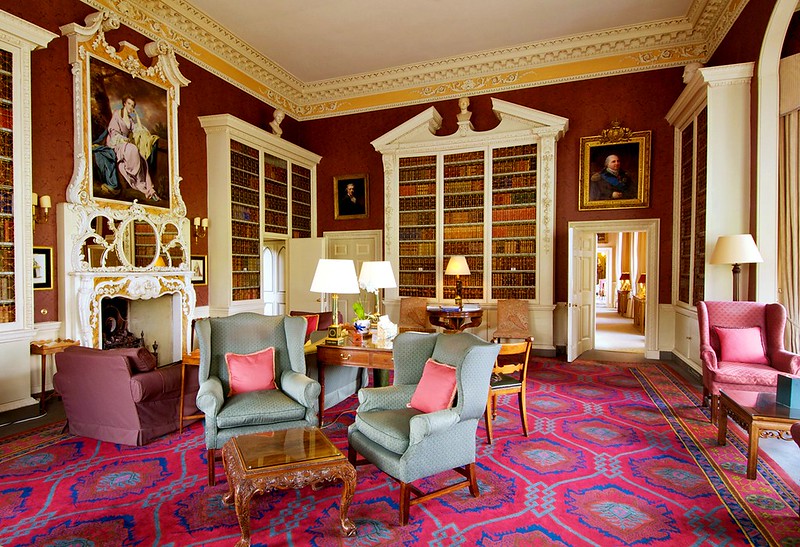
175 Years Since the Founding of The Royal Meteorological Society at Hartwell House in Buckinghamshire

It was in the library at Hartwell House on 3 April 1850 that the British Meteorological Society was founded, later renamed ‘Royal Meteorological Society’ in 1883, incorporated by royal charter and granted ‘Royal’ by Her Majesty Queen Victoria
The Royal Meteorological Society is the leading independent expert in weather and climate. With a Royal Charter and as the only awarding body for Meteorologists, the society is recognised as the leading independent authority for all things weather and climate.
2025 marks 175 years since the society was founded in the library (pictured) at Hartwell House in Buckinghamshire. The British Meteorological Society was founded on 3rd April 1850 when ten gentlemen assembled in the library of Hartwell House. According to the minutes of the meeting, they gathered “to form a society the objects of which should be the advancement and extension of meteorological science by determining the laws of climate and of meteorological phenomena in general”. They called the society the British Meteorological Society and appointed as its president Samuel Charles Whitbread, a grandson of the founder of the famous brewing firm. The society they formed still exists and flourishes. It became The Meteorological Society in 1866, when it was incorporated by royal charter, and the Royal Meteorological Society in 1883, when Her Majesty Queen Victoria granted the privilege of adding ‘Royal’ to the title. Besides Whitbread, those present at the meeting on 3rd April 1850 were Dr John Lee, the owner of Hartwell House.
Today, guests staying at and dining at Hartwell House can spend time in the library. The bookcases in the library are fitted with some of the finest surviving gilt-brass wirework in the country.
Forty miles north west of London, with 48 unique bedrooms and suites, individually designed in a traditional country house, with antiques and fine paintings, Hartwell House is a Grade I-listed property standing in over 90 acres of gardens and parkland. Guests will be staying in illustrious company. The most famous resident was Louis XVIII, exiled King of France. In 1938 the house and estate were acquired by Ernest Cook, an early hero of the conservation movement. The main Dining Room has been designed in the style of the early 19th-century architect, Sir John Soane. The restaurant has been awarded two AA Rosettes. Hartwell Spa in the grounds has a mosaic-lined indoor swimming pool, sauna and steam rooms, gym and café. Guests can spend hours discovering the grounds which include a Gothic Tower, a Statue of Hercules, a Bridge which comprises the central arch of James Paine’s Kew Bridge, Lime Avenue; a mile-long double avenue of limes and the Canal Temple home to 10,000 daffodils. A kitchen garden used by the chefs features apricot, peach, pear and plum trees. Guests can follow a trail around the grounds with a copy of their Tree Map, to identify 10 prize specimens, from a Horse Chestnut and a London Plane tree to a Giant Sequoia. Two all-weather, outdoor tennis courts are also available for guest use.
Now owned by the National Trust and filled with antique treasures, Historic House Hotels are no ordinary hotels. Historic House Hotels was founded over forty years ago to acquire and rescue run-down country houses, then restore and convert them to hotels. Each building is at least 300 years old, and there are few hotels of such charm and historic interest.
The country house hotel was born in the late 1940s. The Second World War was over; people were looking for new ways to spend their time off and keen to explore their country. There had been leisure hotels in Britain before, of course, but this was a stay where you could be pampered in luxurious surroundings; offered a home-from-home with attentive service, good food, rest and recuperation.
Over the decades, of course, country house hospitality has been re-focused, wings and extensions have been added. Hotel owners now offer award-winning restaurants, state-of-the-art gym facilities, aromatherapy saunas, vineyards, organic farms and market gardens. These enduring classics have been subtly updated with modern fixtures. It’s that juxtaposition of modern and old, classic and design-forward that sets the modern country house apart. And Historic House Hotels understands better than anyone that, while the country house hotel continues to evolve, in some ways it has returned to its roots as a quiet sanctuary from the storm.
B&B is priced from £315 per room per night based on two guests sharing